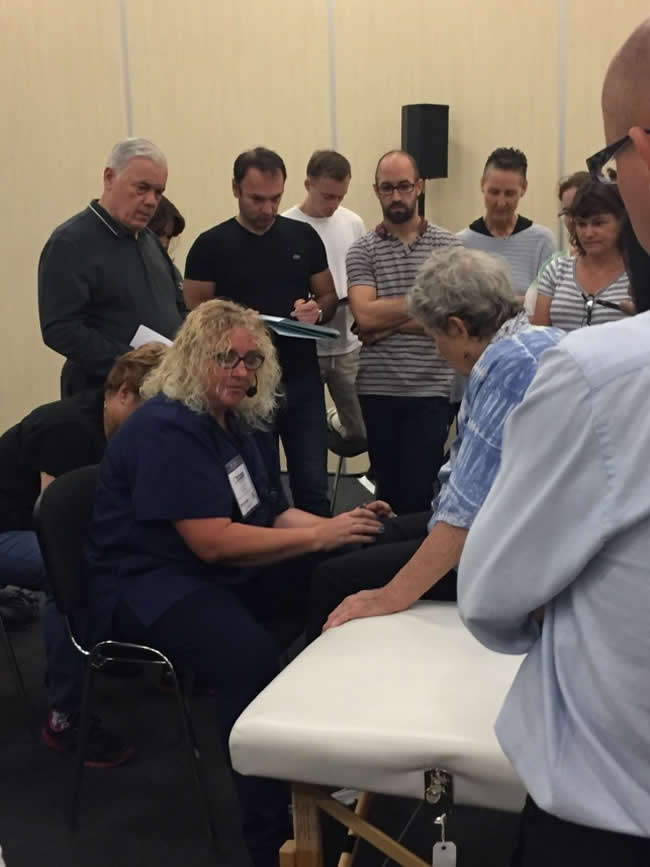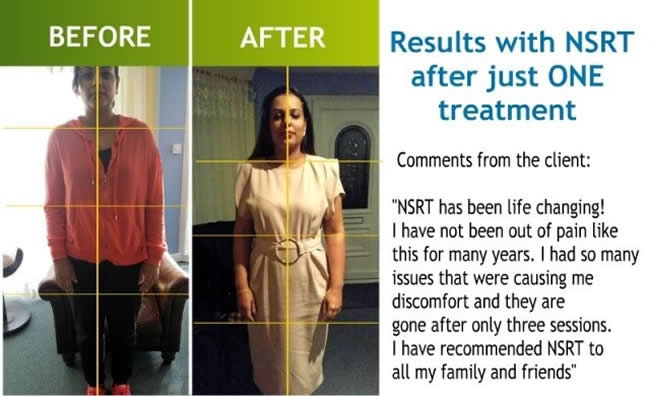Positive Health Online
Your Country

Neuroskeletal Re-alignment Therapy (NSRT) - Does It Work?
listed in neuroskeletal, originally published in issue 252 - February 2019
It has been 21 years since I first wrote an article on this therapy in Positive Health Magazine – PH Online Issue 22 Sept 1997 after I had been to Australia to train in this technique. In that time I have had tremendous success with my clients and have been humbled by the positive changes I have seen in people's lives. I am still amazed by this therapy today and now in my school Natural Therapeutics, I am teaching the therapy to a new generation of therapists with a system where the theory is done online, which reduces the number of visits to me for practical training. It has really opened up the ability for more people to train in this incredible technique. Many people could benefit from this therapy, which is so simple and yet so powerful. As I reflect on this, I have decided to write more on what I have learned about how it works, share some recent case studies and also reflect on the attitude of both the therapist and the client when seeking help by complementary therapies.

Carole Demonstrating NSRT Knee Points
This light touch non-manipulative technique not only works through the neurological biofeedback system but also works through the meridian system. In a research paper from Glenrose Rehabilitation Hospital and University of Alberta in Canada, they discovered that a proprioceptive (the sense of the relative position of neighbouring parts of the body) defect causes a mis-calibration of the neural/musculoskeletal mechanisms that maintain the spine in a balanced upright position. In this study they concluded that there is a feedback control loop present between proprioceptors and the neuromuscular system. The control of spinal alignment therefore requires neural elements able to detect mechanical action and pass on this information for interpretation by higher structures - the brain. This is exactly how NSRT works, using simple light touch to help the brain recognize problems within the body and change them. Pain is a construct of the brain and is not in the tissues, according to Lorimer Mosely (2011), a clinical neuroscientist, and I recommend the you watch his video where he explains this concept in a very humorous and informative way:
https://www.youtube.com/watch?v=gwd-wLdIHjs&noredirect=1
It is the sensory neurons embedded in fascia that first detect external stimuli and if nociceptors are activated a fast nerve impulse travels to the brain via nerve fibres and the spinal cord. The first step with chronic pain is to adjust the environment of the tissues that we think are causing the pain. NSRT allows the brain to instruct relaxation of certain muscles and other structures and to change temperature and pressure and suddenly, the pain message shifts. This is why deep massage does not always work as you can't use pain and further excite the nociceptors to get out of pain as this will only make it worse. It is better to use light touch that helps the body shift on its own without any force, which is exactly what this therapy does. The therapist actually feels this fast pulsation of nerve impulses through their fingers. We use just the middle fingers placed on certain neuropoints to activate change.
Many of my graduates have said that their clients come for massage and that is what they offer, even when NSRT would be more beneficial. Of course if a client insists on a massage then fair enough, but as professionals we should be able to explain to a client when a different therapy would be more beneficial in treating their issues. This is why it is so important to establish goals and to assess and re-evaluate the goals on your consultation form. When a client comes for treatment, you are the professional who is best placed to tell the client which therapy would most suit them. I have never had a problem with this, which is why someone may book a massage with me but I may end up doing NSRT instead, or vice versa. My clients trust my judgement as the professional. When clients enter the therapy room they are not always certain about the outcomes. They are more likely to think about what they want to stop happening rather than what they need to achieve. It is our job to do a thorough examination and postural assessment and explain what we feel the problem is from our extensive knowledge of anatomy, physiology and pathology. Massage does not always go far enough if the underlying cause is a misalignment. The massage will provide temporary relief, but the goal we should be aiming for is to get a positive solution for the problem so that the client can return to normality, ideally without re-occurrence. Some therapists like to hold onto their clients, but this is completely unethical. If you are not progressing the condition for your clients, it is time to refer or retrain in a new modality that can help. Of course, everyone can come back for maintenance massage and science now evidences that regular massage has many health benefits, including improving your immunity, but when someone comes with a specific complaint, you need to focus on a positive outcome following full consultation and ideally a timeframe.
The next important part of any consultation is about re-evaluating between treatments. People do not remember pain. We are programmed not to remember it. Women would never have a second child otherwise! We know it hurt but we cannot remember the intensity of it. In fact, the worst pain for you would be if I were to pinch you right now. It is in the moment. With that in mind, it is important to record people's pain during the consultation and I always get them to describe it, show me the location and then score it out of 10, 10 being the worst. When you see the client again, ask them systematically about each pain they scored. It is amazing how they will often say "oh, I had forgotten about that, and it is zero, completely gone". If you don't record and re-evaluate in this way, the client will not focus on how beneficial the treatment has been. It is the role of the therapist to help your clients identify that they have reached their outcome. This can be from stopping pain, improving mobility, changing the way they look at things and how they feel about themselves and life in general. It can also be the way they look. Others will notice the change and as I now take photos on my Smartphone for before and after shots, I can see the differences and share these with the client.
Case Studies
A client came to me for back pain following some intense gardening that had become chronic. During the initial consultation and postural assessment it became clear that there were also issues with his neck and shoulders. He explained that he had been diagnosed with arthritis in the neck by his GP who had never touched his neck. He had been to see a chiropractor to ease his symptoms with no positive outcomes. When he returned for his second NSRT treatment he was particularly excited about his increased neck mobility and asked me immediately if I had intended to free up his neck since his primary issue had been the back pain. On the third visit, he had gained a considerable amount of lateral rotation of his neck to the right and this was what he focused on. After questioning he replied "yes the back pain has also gone"! This happens all the time where the original complaint has gone and clients are noticing other issues that they have suffered for years and put up with as normal for them, suddenly start to also improve due to our full body alignment policy in every treatment.

Another client came with issues in her arms but during the postural assessment there were clearly other issues as you can see from the photograph. Her energy was also low and she was generally unhappy with many aspects of her life at that time and felt lethargic and unmotivated. You can see the change in her between the two treatments in the photo; not just the posture, which had changed dramatically but also in how she looks. Friends and family noticed the difference. Her goal was not just to be free from pain but to have more energy, feel energised and reconnect with all that life has to offer. This is what wellness is and it is our role as complementary therapists to facilitate and direct clients towards positive solutions and to regain wellbeing, whatever therapy you practise and whatever that may be for them.
She has commented that the therapy has changed her life and allowed me to use this in marketing. This is so rewarding as a therapist. To answer my question about whether or not this therapy works, well I certainly would not still be practising it and making my living from it if it didn’t! I never have to advertise; people keep recommending it from their successes.
Further Information
For more information on this amazing therapy do you can view the website at www.neuroskeletal.org where we have links to published articles and we also have a Facebook page. The diploma course is accredited by Complementary Health Professionals through my school Natural Therapeutics. Training details and information on booking a treatment with me is available at www.naturaltherapeutics.co.uk
Comments:
-
No Article Comments available